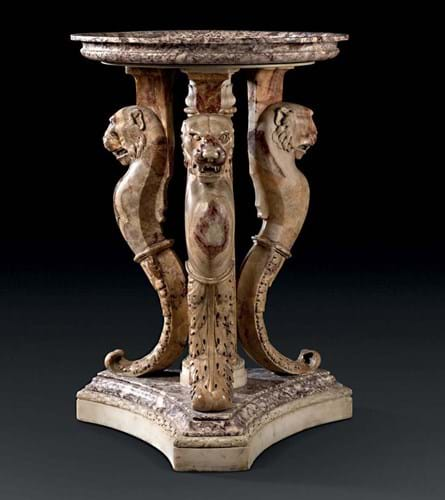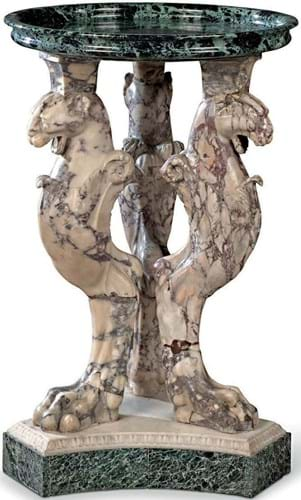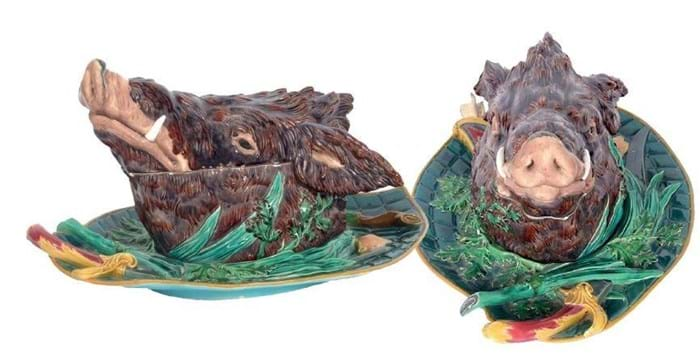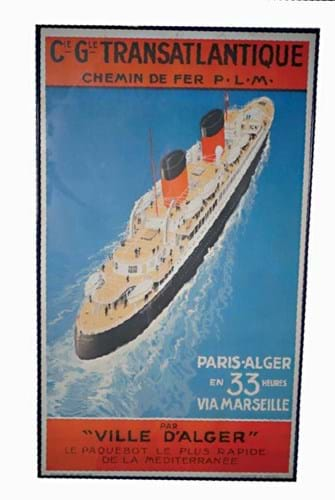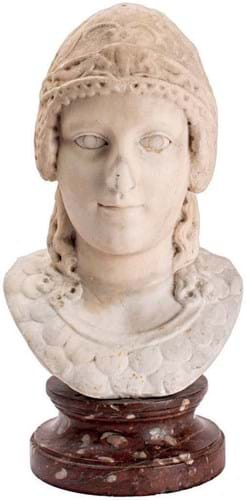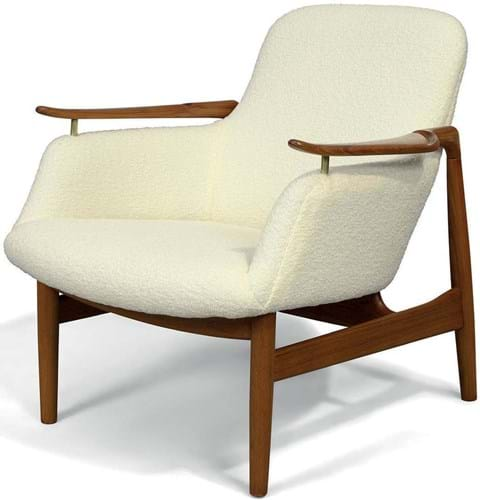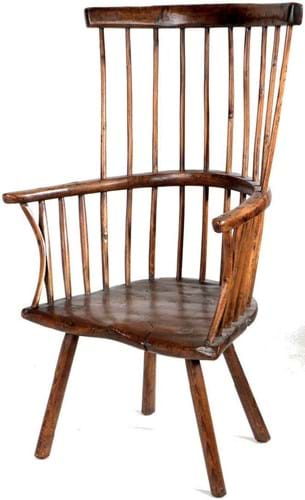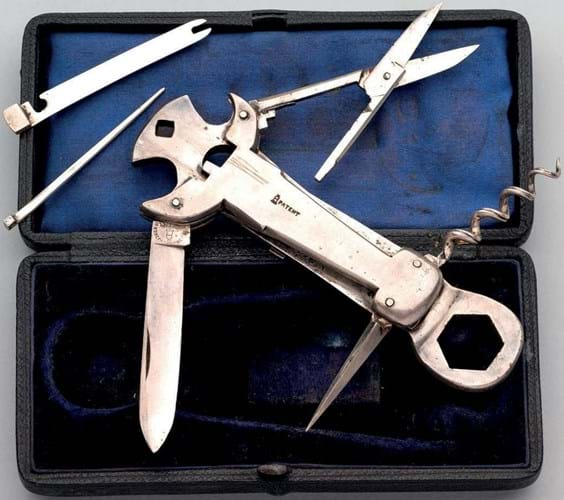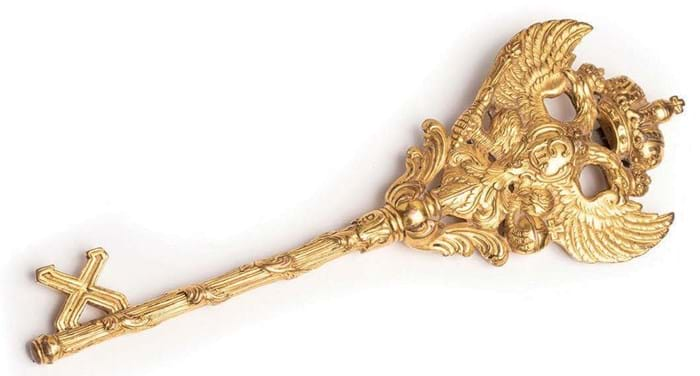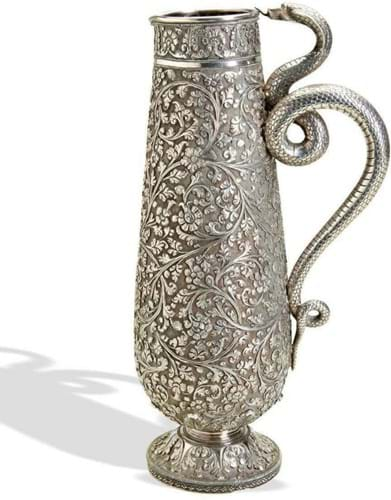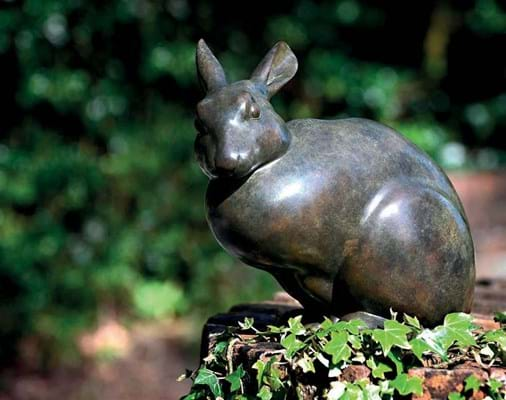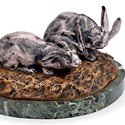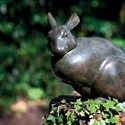Italian tripod tables
The multi-discipline Exceptional Sale at Christie’s on July 6 includes two Italian tripod tables previously owned by Thomas Hope (1769-1831).
Made in the Grand Tour era using ancient Roman elements thought to have been found during excavation of Hadrian’s Villa in c.1789, they formed part of the furnishings at Hope’s London home on Duchess Street off Portland Place and later at his country house The Deepdene in Surrey. Both were exhibited as part of the 2008 show Thomas Hope: Regency Designer at the Victoria and Albert Museum.
A vociferous collector of antiquities, Hope is considered the single-most influential figure in the development of the Regency style. His Duchess Street house was used as his showroom to promote his designs for the new aesthetic, interpreted from Greek, Roman and Egyptian art and design. A design for a tripod table in Hope’s design book, Household Furniture and Interior Decoration (1804), was no doubt inspired by these tables.
They were transferred to The Deepdene in 1824-25 and later mentioned as being placed in the theatre and conservatory.
The ’pair’ were last sold in 1917 when the Hope estate was placed into the hands of the receivers and the greater part of the collection of ancient marbles was sold at Christie’s. They were bought for a combined 460 guineas by the London dealer Durlacher on behalf of Baron Bruno Schroder (1865-1940) of Dell Park, Surrey. They have come for sale by descent.
The table made in polychrome marble – one that was used to display a Roman marble satyr head in the Statue Gallery at Duchess Street – is estimated at £30,000-50,000. The other, which consists of ancient alabaster trapezophori carved with fierce panther heads and a later top and base of breccia marble, is guided at £50,000-80,000.
Silver candlestick
Barkentin & Krall was a London silversmith and art metalworking business active from about 1868-1930 that partnered Jes Barkentin (c.1815-83), a Danish metalworker, with the German silversmith Carl Christopher Krall (1844-1923).
The firm is best known for producing a small group of silver and silver-mounted objects designed by the architect William Burges.
Pictured here is a large 2ft 11in (87cm) high silver and enamel altar candlestick marked for 1911. Decorated in a quasi-medieval style with green, red and blue enamel foliate designs, a raised triangular base features images of the saints Irenaeus, Clement and Ignatius. This candlestick is from an altar set made by Barkentin and Krall in 1911 that was offered in its entirety at Sotheby’s in 2008.
The set since split up, this single stick has a guide of £3000-4000 as part of a private collection of Arts & Crafts and modern silver offered by Woolley & Wallis in Salisbury on July 11-12.
Minton flasks
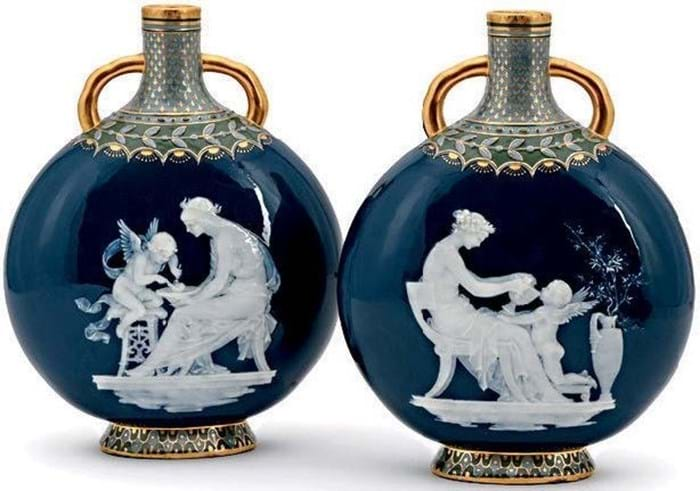
Minton flasks, c.1900, estimated at £15,000-25,000 at Dreweatts.
After beginning his career at the Sèvres porcelain factory, Marc Louis Solon (1835-1913) moved to Stoke-on-Trent to work at Mintons where he became the leading exponent of the pâte-sur-pâte technique. His work commanded high prices in the late Victorian period, and it is still much admired today.
This pair of 10in (26cm) flasks c.1900 are decorated in relief with Venus and Cupid vignettes emblematic of food and wine, reserved on a blue ground. They are estimated at £15,000-25,000 as part of the auction of items from Wyld Court, Devon, held at Dreweatts in Donnington Priory, Berkshire on July 19. The sale includes seven lots of Minton pâte-sur-pâte.
Duncan Grant still life
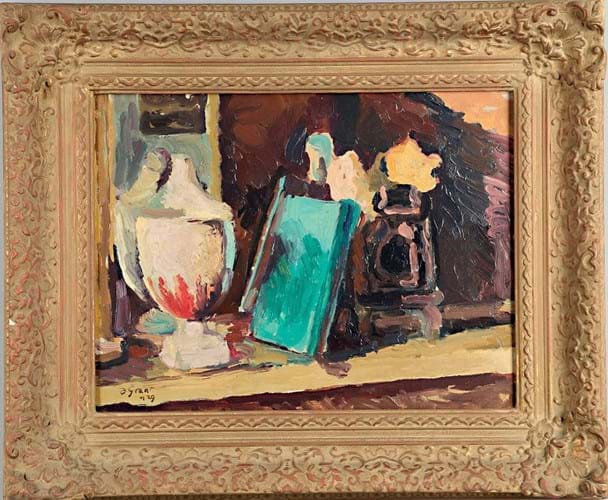
The Mantelpiece by Duncan Grant (1885-1978), 1929, estimated at £8000-10,000 at Lawrences of Crewkerne.
The Mantelpiece, painted by Bloomsbury artist Duncan Grant (1885-1978) in 1929, was formerly part of the collection of Sir Hugh Wapole, an eager collector of Grant’s work.
Executed in a swift and spontaneous manner, the still-life subject is a familiar one from this period and this canvas was probably painted in London or at Vanessa Bell’s house in Cassis, France
The painting, which was exhibited at The Leicester Galleries’ Exhibition of the Collection of the late Sir Hugh Walpole in 1945, has an estimate of £8000-10,000 at Lawrences of Crewkerne, Somerset, on July 10.
‘Constabulary’ percussion pistols

Cased pair of ‘constabulary’ percussion pistols by M Smith of Birmingham, c.1840, offered together with a similar period bullet mould, estimated at £2000-3000 at Holts.
The sale of Fine Modern & Antique Arms at Holts in Wolferton, Norfolk, on July 10-11 includes this cased pair of ‘constabulary’ percussion pistols by M Smith of Birmingham.
Made c.1840 and still retaining much of its original blued steel colour and finish, both 5in octagonal barrels are marked Public Office Birmingham No2 with a bow-tie escutcheon to the case engraved Presented by the Inhabitants of Birmingham to Mr William Corbett for his services as Constable from Oct’r 1839 to Oct’r 1840.
Offered together with a similar period bullet mould, loading rod and James Dixon powder flask, they have an estimate of £2000-3000.
Rare tureen
The boar’s head tureen with matching stand is considered the rarest of all the game tureens made by the Minton factory in its colourful majolica range.
The model, with the date letter for 1877, replicates an 18th century design made popular by Chelsea in soft paste porcelain. Only a handful of these are known and those that have appeared at auction have made spectacular sums.
This example in good condition was recently found by Norfolk auction house Keys. It will be offered on the first day of the firm’s July 26-28 Fine Art and Antiques sale in Aylsham with an estimate of £15,000-18,000.
Empress mallet

The mallet and silver casket from the ill-fated RMS Empress of Ireland, estimated at £10,000-15,000 at McTear’s.
The ivory launching mallet and silver casket from the ill-fated RMS Empress of Ireland comes for sale at McTear’s Fine Furniture & Works of Art auction in Glasgow on July 20. The historic maritime lot is expected to bring £10,000-15,000.
Commissioned by Canadian Pacific Steamships for transatlantic crossings, the Empress of Ireland was built at Govan Shipyards by the Fairfield Shipbuilding and Engineering Company. She was launched in 1906.
Tragically, on May 29, 1914 - only two years after the sinking of the Titanic - the Empress went down in the St Lawrence River following a collision with the Norwegian collier SS Storstad. The disaster claimed the lives of 1012 passengers and crew members, making it the worst peacetime marine disaster in Canadian history.
The carved, turned and inscribed ivory launching mallet and Edwardian silver casket was gifted at the time to the wife of Sir Alexander Gracie, a member of the Fairfield board of directors. They come by family descent.
The mallet is one of a relatively small number of solid ivory items that have come to auction since the Ivory Act was implemented in 2022. It has been granted an exemption on the grounds of its ‘outstanding artistic, historical or cultural value’.
JMW Turner watercolour
This early architectural watercolour, East Cliff Lodge, Ramsgate, the seat of Lord Keith, by JMW Turner (1775-1851) is to be offered at the Bonhams Old Master Paintings sale in London on July 5. It is estimated at £30,000-50,000.
Caroline Oliphant, Bonhams’ director of Old Master paintings, says: “East Cliffe Lodge dates from 1796-7 when the artist was in his early 20s and is one of several architectural watercolours Turner executed around this time. Topographical commissions were a good and dependable way of earning a living for young aspiring painters but, this being Turner, the results are, of course, rather special.”
East Cliffe Lodge was designed in the gothic revival style by Charles Boncey and completed by 1794. Early owners included George Elphinstone, 1st Viscount Keith (1764-1823), a Scottish-born naval officer who served in the American Revolutionary and Napoleonic Wars. He was commander in chief of the North Sea Squadron while living at Cliffe Lodge; the house giving him an excellent view of the Downs anchorage.
In 1831, East Cliffe was acquired by Moses Haim Montefiore (1784-1885), a key figure in British Jewish history. He built a private synagogue in the grounds of East Cliffe and, following his wife’s death in 1862, commissioned a mausoleum where they both now lie. Most of the house was demolished in 1954 but the synagogue and mausoleum remain.
Vintage travel posters
Born into a Jewish Orthodox family in Brooklyn, New York, Seymour Stein (1943-2023) discovered his love of pop music early on, listening to records and memorising Billboard magazine’s charts. During a summer holiday in the late 50s he talked his way into an internship at Billboard’s offices on 47th Street and Broadway and the rest is history.
During his career as an ‘A&R man’ he launched the careers of many big acts in the 1980s including the Ramones, Talking Heads, Depeche Mode and (his biggest success) Madonna.
Stein used his fortune to eat well and collect art and antiques – particularly items relating to advertising history and the Art Deco period. He sold part of his collection in the early 2000s and said at the time: “I thought many times of opening a gallery to sell off most of what I purchased, for in truth I had bought enough to fill several homes. I was always too busy chasing bands to do anything about it.”
Bellmans in Billingshurst, West Sussex, is holding two auctions devoted to the eclectic Stein collection this summer: one on June 26 and another on August 7-8. The August sale includes a number of vintage travel posters including this c.1935 image for the Ville D’Alger, the fastest ship built at the time for Mediterranean service (estimate £300-500).
Baroque bust and Sèvres plate
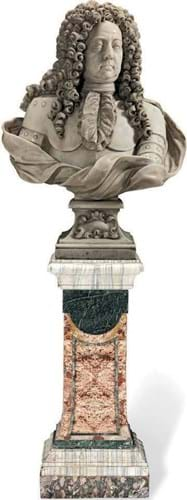
Carved white marble bust of Cesare II Visconti by Giuseppe Rusnati (1647-1713), estimate at £40,000-60,000 at Bonhams.
The Fine Decorative Arts sale at Bonhams on July 12 includes this monumental carved white marble bust and pedestal from the baroque period. Sculpted by Giuseppe Rusnati (1647-1713), the subject is the Italian noble Cesare II Visconti, 3rd Marquis of Cislago.
He was the last of his particular branch of the Visconti family and when the bust was sold in 1973 by a descendant in Italy, the identity of the subject had been lost. The viscounts of Cislago were lords of Gallarte, the place where Rusnati is thought to have been born. Most of his work, influenced by Bernini, was done for the Catholic church and no other portrait bust by him is thought to have survived. Estimate £40,000-60,000.
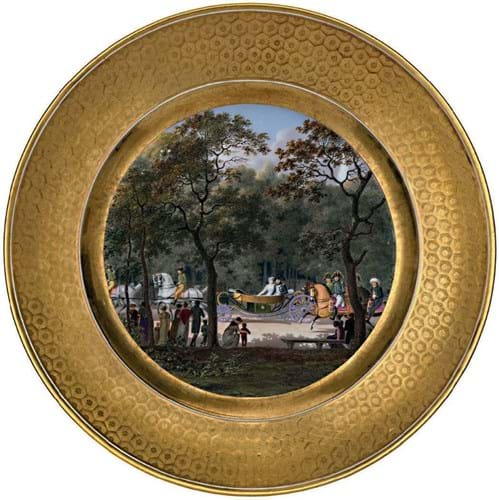
Sèvres plate made for the personal use of Napoléon Bonaparte, estimated at £200,000-300,000 at Bonhams.
Meanwhile, a Sèvres plate made for the personal use of Napoléon Bonaparte in 1807 leads Bonhams’ 500 Years of European Ceramics Sale in London on July 6.
Promenade de leurs Majestés Impériales et Royales, au Parc de St Cloud, painted by Jean-François Robert, is the first known depiction of Napoléon and Josephine de Beauharnais on porcelain.
Robert, who had exceptional status at the Napoleonic court, was one of only a few artists permitted to sketch freely in the park. He shows the emperor and his consort in an informal setting, riding in an open top carriage. Estimate £200,000-300,000.
The youthful Ares
The auction at Bearnes Hampton & Littlewood in Exeter on July 11-12 includes this ancient 12in (31cm) white marble bust of a youthful Ares estimated at £2000-4000. It is thought to be a Roman 2nd century AD copy version after the Classical Greek original by Alcamenes.
Ares is portrayed looking straight ahead, his spectacular helmet modelled in relief with gryphons and confronting panthers.
Finn Juhl lounge chair
This is the famous model NV53 lounge chair by Danish designer Finn Juhl (1912-89). Produced, as the name suggests, in c.1953 by master cabinet maker Niels Vodder, this example has been lovingly restored and re-upholstered in bouclé. It has a guide of £4000-5000 as part of the Design Since 1860 sale at Roseberys in London on July 4.
Spanish bureau cabinets
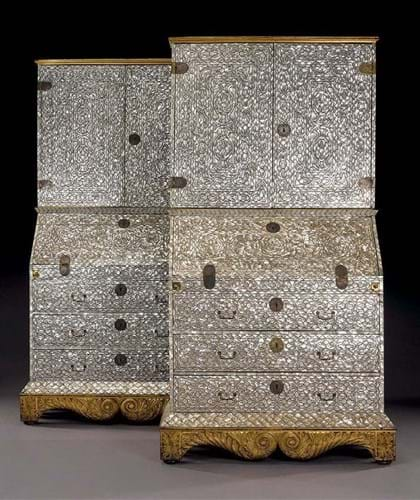
Spanish colonial silver-mounted and mother-of-pearl bureau cabinets, estimated at £100,000-200,000 at Sotheby’s.
This pair of Spanish colonial silver-mounted and mother-of-pearl bureau cabinets were made in Lima, Peru during the second half of the 18th century. Spectacular examples of cross-cultural pollination in Spanish America, they combine multiple influences from Asia and Europe.
This form of bureau was based on English prototypes of the early 18th century, which were exported to the Iberian Peninsula throughout the century, The extraordinary decoration is inspired by the caskets and table-tops produced in the Indian region of Gujarat in the 16th and early 17th century.
Only a few similar pieces are known and these - ‘the property of a lady of title’ - may be the only surviving pair. They probably originally had a cresting with the carved bases probably early 20th century additions.
They have an estimate of £100,000-200,000 as part the Treasures sale at Sotheby’s on July 5.
William Beckford's milk jug
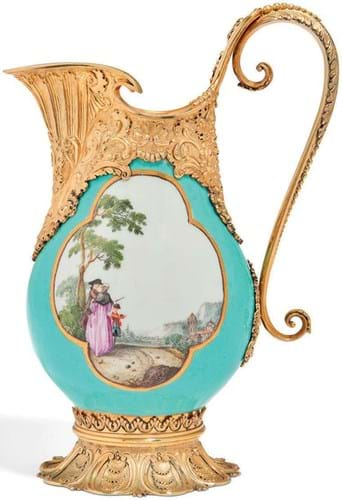
Turquoise glazed Meissen porcelain jug, with silver gilt mounts by James Aldridge of London, estimate of £8000-12,000 at at Christie’s.
The celebrated art collector, connoisseur and gentleman architect, William Beckford is best remembered for his extraordinary Fonthill Abbey, designed in collaboration with the architect James Wyatt. Just occasionally do some of the many objects used to decorate this Gothic fantasy come for sale.
This extraordinary Regency milk jug comes for sale at Christie’s on July 7 as part of the Bayreuth collection of English silver and gold boxes.
It combines a turquoise glazed Meissen porcelain jug made in Dresden, c.1740, with silver gilt mounts by James Aldridge of London in 1816. Aldridge made the majority of the mounts for Beckford’s porcelain collection. The design of this flamboyant mount, that is applied with the Hamilton cinquefoil and the Beckford Latimer cross, is derived from one of the many 16th and 17th century nautilus cups Beckford owned.
The jug, last sold at Sotheby’s in 1994 as part of the collection of Sir Michael Sobell, has an estimate of £8000-12,000.
Windsor chair
Contents from Eyton Court, a Leominster Tudor manor house with Georgian and modern additions, come for sale at Bishop & Miller in Stowmarket on July 28. The single-owner collection formed over the last 40 years brings together pieces in the British vernacular style - from folk art and delft to 17th century tapestries.
This primitive ‘shawl back’ Windsor chair made in the West Country c.1800 is guided at £1000-1500.
Brookes & Crookes tool
The Sheffield firm Brookes & Crookes was established in 1858 by two nonconformists, John Brookes (1825-65) and Thomas Crookes (1826-1912), with the aim of producing first-class goods while providing fair remuneration for labour. The partnership was short-lived (Brookes died seven years later) but the firm prospered under Crookes and was famed for the variety of their sportsman’s and multi-blade knives.
This nickel silver-plated tool, bearing the firm’s ‘bell’ trademark, was made c.1910 in the early years of the automobile. The folding accessories include a main blade, scissors, corkscrew and pick, plus two spanner heads.
It is part of the remarkable David Hayden-Wright collection of antique knives to be offered in 290 lots by Thomas Del Mar at Olympia Auctions in London on June 29. One of the UK’s most respected 20th century authorities on antique weaponry, Hayden-Wright wrote the preeminent reference on the subject, The Heritage of English Knives (2008).
Estimate £800-1000.
Chamberlain’s Key
This 18th century Russian gilt-bronze Chamberlain’s Key was presented by Catherine the Great to the eminent English doctor Thomas Dimsdale (1712-1800) for his medical services. Dimsdale, who developed smallpox inoculation (a precursor to vaccination), was invited to St Petersburg by the monarch who – together with 140 members of the Russian Imperial Court – was immunised using Dimsdale’s method.
Dimsdale was generously rewarded with over £12,000 as well as receiving both the title of Chamberlain, as well as the title of Baron of the Russian Empire, which came with a generous pension. The key, believed to have been produced by the Imperial Tula workshops, would have given him almost free rein in the royal palace.
It was given to the current owner’s father in the 1920s by his grandmother Ethel Gordon Fenwick to encourage him to enter the world of medicine. Fenwick played a major role in the history of nursing in the UK, lobbying parliament for the registration of nurses.
The key is estimated at £8000-10,000 in Chorley’s auction in Gloucestershire on June 27.
Kutch silver
Frome auction house Dore & Rees is to hold specialist silver sales headed by consultant Duncan Campbell. Two a year are planned in Somerset, focusing on collectors’ silver that remains the most buoyant aspect of the market. Campbell plans to provide “a sale you don’t need to view with the cataloguing, images and detailed condition reports that will inspire confidence”.
The first auction on June 28 includes this 12in (30cm) high chased silver jug with a coiling snake handle c.1880 estimated at £1800-2200. The piece is typical of those made in the town of Bhuj in the gulf of Kutch.
Imogen Paine collection
In this, the Chinese year of the rabbit, Dreweatts’ Fine Furniture, Sculpture, Carpets, Ceramics and Works of Art auction in Newbury on June 28 includes the Imogen Paine collection. Comprising 140 lots, it offers rabbit and hare groups and models by some of the finest 19th, 20th and 21st century animalier sculptors.
Based in Oxfordshire, Paine has worked for over 35 years as a restorer of sculpture and works of art. Her first ‘proper’ job, she recalls, was working at sculpture dealership Sladmore Gallery in London, a specialist in French animalier bronzes.
“The job instilled in me a deep appreciation of the broad and varied range of animalier artists and their differing approaches to modelling, casting and patination. I noted that all of the greats – Antoine-Louis Barye, Jules Moigniez, Auguste Cain, Pierre-Jules Mêne and Alfred Dubucand – had at some point sculpted rabbits or hares, presenting them in so many guises: crouching scared, crouching sleeping, relaxed and grooming, on the run or nursing young.”
As someone who had long kept rabbits as pets (Paine currently has eight resident house rabbits), the urge to collect them in bronze or terracotta proved too strong.
Pictured here are just two of the Pain collection of leporids: Charles Gremon’s 8in (20cm) silvered and gilded bronze and green marble group of two grooming rabbits (estimate £400- 600) and a 10in (24cm) Geoffrey Dashwood limited edition bronze numbered 11/12 (guide £2500-4000).
Thomas Landseer's tiger
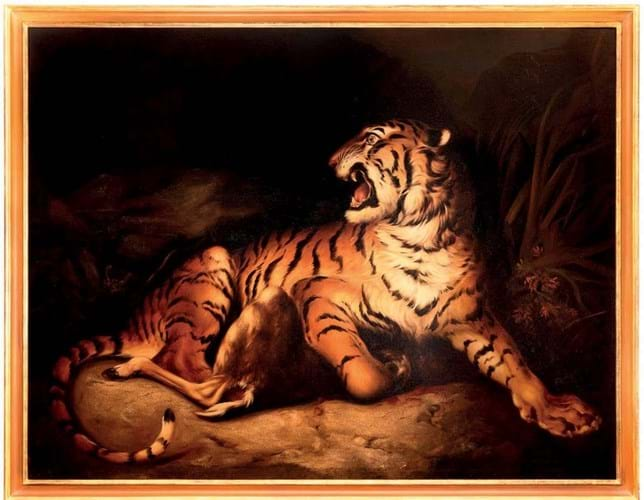
Painting of a Bengal tiger by Thomas Landseer, estimated at £50,000-80,000 at Sloane Street Auctions.
The June 29 sale at Sloane Street Auctions in London includes this painting of a Bengal tiger by the preeminent animal portraitist Thomas Landseer (1793-1880).
Described as ‘an important recent discovery’, the painting depicts the big cat that was housed in the menagerie at the King’s Mews in London, now the site of the National Gallery. The painting is thought to be a preparatory study for an etching in the print series Characteristick Portraits of Animals published in 1829. In both the painting and the etching, we see a snarling tiger guarding its kill although in the print a second tiger has been added, which appears to be intent on stealing the deer from its counterpart.
The painting has an estimate of £50,000-80,000.


